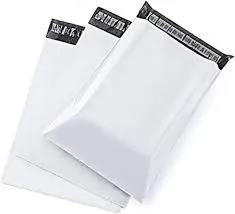Exploring the Materials Used in Disposable Glove Manufacturing and Their Applications
Understanding Disposable Glove Materials A Comprehensive Overview
Disposable gloves have become an essential item in various industries, particularly in healthcare, food service, and laboratory environments. Their primary purpose is to provide a barrier against contaminants, ensuring both user safety and product integrity. As the demand for these gloves continues to rise, understanding the different materials used in their production is crucial. This article explores the most common materials used for disposable gloves, highlighting their characteristics, advantages, and potential drawbacks.
1. Latex Gloves
Latex gloves were once the standard in various applications due to their high elasticity and comfort. Made from natural rubber latex, these gloves provide excellent tactile sensitivity and dexterity. They are also effective against a range of pathogens, making them ideal for healthcare settings.
Advantages - Comfort and Fit Latex gloves conform to the hand, providing a snug fit that enhances dexterity. - Biodegradable Being made from natural materials, they are more environmentally friendly compared to synthetic options.
Drawbacks - Allergic Reactions A significant proportion of the population is allergic to latex, leading to skin irritation or more severe allergic reactions. - Limited Chemical Resistance Latex gloves are not suitable for handling certain chemicals, as they can degrade or fail under exposure.
2. Nitrile Gloves
Nitrile gloves have gained popularity, especially in medical and industrial applications, as an alternative to latex gloves. Made from synthetic rubber, nitrile offers excellent puncture resistance and strength.
Advantages - Allergy-Friendly Nitrile gloves are latex-free, making them a suitable choice for individuals with latex allergies. - Chemical Resistance They offer superior protection against a variety of chemicals and pathogens, making them ideal for healthcare, automotive, and cleaning industries.
Drawbacks - Cost Nitrile gloves are generally more expensive than latex gloves, which could be a consideration for bulk purchasing. - Less Stretchy While they provide good mechanical properties, nitrile gloves are less elastic than latex, which may affect comfort over prolonged use.
3. Vinyl Gloves
disposable glove materials

Vinyl gloves are made from polyvinyl chloride (PVC) and are the most economical option among disposable gloves. They are frequently used in low-risk tasks such as food preparation and cleaning.
Advantages - Cost-Effective Vinyl gloves are significantly cheaper than both latex and nitrile options, making them accessible for large-scale usage. - Low Allergenic Potential They do not contain latex proteins, minimizing the risk of allergies.
Drawbacks - Durability Vinyl gloves are less durable and offer lower puncture resistance compared to nitrile and latex, making them unsuitable for high-risk environments. - Chemical Resistance They have limited chemical resistance, which restricts their use in certain applications.
4. Polyethylene Gloves
Polyethylene gloves are made from thin plastic film (“poly”) and are commonly used in food handling and preparation. They are often seen as less formalized than the other glove types but serve a purpose in certain situations.
Advantages - Easy to Use They are easy to put on and take off, typically offering a loose fit that is suitable for quick tasks. - Inexpensive Polyethylene gloves are the least expensive option, making them ideal for single-use situations.
Drawbacks - Low Protection These gloves provide minimal barrier protection and are not suitable for healthcare or environments requiring dexterity and protection from chemicals or pathogens.
Conclusion
As the landscape of disposable gloves continues to evolve, understanding the various materials available is essential for selecting the right type for specific applications. Latex, nitrile, vinyl, and polyethylene each have distinct properties that make them suitable for different tasks. While latex offers comfort and fit, nitrile provides excellent protection against chemicals and is allergen-free. Vinyl is cost-effective for low-risk environments, while polyethylene is ideal for quick tasks involving minimal risk.
Ultimately, the choice of disposable glove material should be guided by the specific requirements of the task at hand, considering factors like sensitivity, chemical exposure, and user allergies. As safety standards continue to rise, the innovation in glove materials will likely expand, offering even more options for consumers across various industries.
-
The Best Uses for Small Trash Bags in Daily LifeNewsJul.01,2025
-
Stylish Reusable Grocery Bags TrendsNewsJul.01,2025
-
Shipping Advantages of Using Bubble Envelopes BulkNewsJul.01,2025
-
How Compostable Mailing Bags Reduce Environmental ImpactNewsJul.01,2025
-
Environmentally - Friendly Bulk Poly MailersNewsJul.01,2025
-
Eco Friendly Custom Laminated Tote BagsNewsJul.01,2025
-
Have the freedom of customizing your custom mailers any way you want! Our dedicated packaging support will help deliver you the mailing experience you need to elevate your shipping experience to the next level! Start making a strong impression on your customers and stand out from your competitors! -
LIYA uses high quality raw materials which directly purchased from large enterprises domestic and overseas such as PetroChina, Sinopec, Sabic, Equate, ExxonMobil, Dow Chemical, Total, and Borouge, ensuring the price advantage and quality of the raw materials. -
LIYA uses high quality raw materials which directly purchased from large enterprises domestic and overseas such as PetroChina, Sinopec, Sabic, Equate, ExxonMobil, Dow Chemical, Total, and Borouge, ensuring the price advantage and quality of the raw materials.





